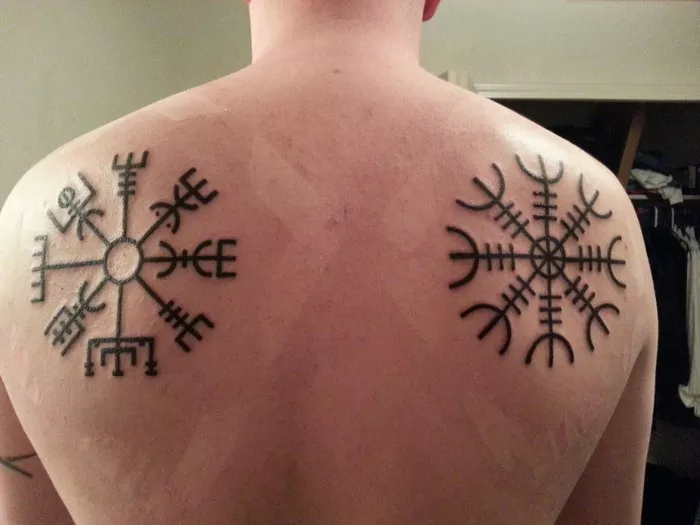Tattooing, as an art form, has evolved significantly over the years, from traditional tribal designs to intricate contemporary masterpieces. With this evolution comes the question of artistic integrity and the boundaries between inspiration and replication. One common dilemma that tattoo artists face is whether they should copy existing designs or create original artwork for their clients. This debate raises various ethical, artistic, and practical considerations that merit exploration.
Defining Artistic Integrity
Artistic integrity refers to the moral and ethical principles that guide an artist’s creative process. It encompasses authenticity, originality, and respect for the creative rights of others. Tattoo artists, like all creatives, often grapple with the balance between artistic expression and commercial demands. While they aim to fulfill their clients’ desires, they must also uphold their own artistic standards and values.
The Role of Client Expectations
One of the primary factors influencing whether tattoo artists choose to copy designs is client expectations. Many clients come to tattoo studios with specific images or ideas in mind, often inspired by existing artwork they’ve seen online or elsewhere. They may request exact replicas of these designs, expecting the tattoo artist to reproduce them faithfully.
For some clients, the significance of a particular design lies in its visual representation rather than its originality. They may have a personal connection to a specific image or symbol and desire it to be permanently inked on their skin. In such cases, the tattoo artist faces the challenge of balancing the client’s wishes with their own commitment to artistic integrity.
Ethical Considerations
Copying someone else’s tattoo design raises ethical concerns within the tattoo community. It raises questions about intellectual property rights, creative ownership, and artistic credibility. While certain designs, such as traditional motifs or cultural symbols, may be considered part of the public domain, directly replicating another artist’s original work without permission is widely frowned upon.
Tattoo artists who copy designs without proper attribution not only risk damaging their reputation within the industry but also undermine the value of original artwork. Moreover, they may face legal consequences if they infringe upon copyrighted designs. Therefore, ethical tattoo artists prioritize respecting the creative rights of their peers and clients while striving to maintain their own artistic integrity.
Artistic Freedom vs. Commercial Demands
In the tattoo industry, artists often navigate the tension between artistic freedom and commercial demands. While they may have a personal style and creative vision, they must also cater to the preferences of their clients to sustain their business. This delicate balance can sometimes lead artists to compromise on their principles, especially when faced with pressure to meet client expectations or generate income.
Some tattoo artists view copying designs as a necessary compromise to accommodate client requests and keep their businesses profitable. They may argue that reproducing popular designs helps attract clients and generate revenue, especially in a competitive market saturated with similar tattoo styles. However, others believe that prioritizing originality and artistic expression ultimately leads to greater satisfaction for both the artist and the client.
Educating Clients on Originality
One approach to addressing the issue of copying in the tattoo industry is to educate clients about the importance of original artwork. Tattoo artists can engage in open dialogue with their clients, explaining the creative process and encouraging them to collaborate on unique designs tailored to their individual preferences. By emphasizing the value of originality and creative collaboration, artists can empower clients to appreciate the artistic integrity behind each tattoo.
Additionally, tattoo artists can showcase their portfolio of original designs to inspire clients and demonstrate their artistic capabilities. By highlighting their unique style and creative versatility, artists can differentiate themselves from those who simply replicate existing designs. This approach not only fosters a deeper connection between the artist and the client but also reinforces the significance of original artwork within the tattoo community.
Promoting Collaboration and Innovation
Rather than viewing copying as a limitation, some tattoo artists see it as an opportunity for collaboration and innovation. They may use existing designs as inspiration but incorporate their own artistic flair and interpretation to create something new and personalized for each client. This approach allows artists to honor the client’s vision while showcasing their creativity and technical skill.
Collaborative tattooing, where artists and clients work together to co-create unique designs, has gained popularity as a way to foster creativity and authenticity in the tattooing process. By engaging clients in the design process and encouraging them to contribute their ideas and feedback, artists can ensure that each tattoo reflects the client’s personality and story while maintaining artistic integrity.
Conclusion
The question of whether tattoo artists hate copying is complex and multifaceted, touching on issues of artistic integrity, client expectations, and ethical considerations. While some artists may view copying designs as a necessary compromise to meet client demands and sustain their business, others prioritize originality and creative expression, recognizing the value of respecting the creative rights of others.
Ultimately, the relationship between tattoo artists and copying depends on individual values, principles, and approaches to the artistic process. By promoting open dialogue, educating clients on the importance of original artwork, and fostering collaboration and innovation, tattoo artists can navigate this issue with integrity and professionalism, ensuring that each tattoo reflects both the client’s vision and the artist’s creative identity.

